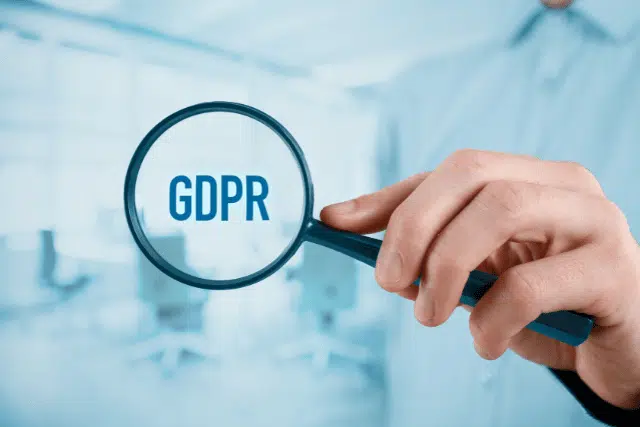As the online marketplace evolved, organizations began to understand the power of data to drive innovation, targeted marketing, and revenue.
At first, it was not always clear what types of data would be most useful.
As a result, some organizations became data hoarders. Personal data became to databases what unused items are to an overstuffed garage or storage unit – saved in a corner because ‘someday this will be useful.’
As once source says, however, “Data – well, it’s pretty much at work everywhere these days, but as is the case with so much in life, it’s what you do with the information that counts.”
The days of overcollection and excessive data retention are quickly ending.
To better engage users and drive hyper-personalization, marketers will need to dig for deeper data, and more specifically, intentional data.
What is intentionality data
Intentionality – in identifying the audiences best suited to a company’s products and services, collecting and using exactly the data the organization needs about its target personas, and retaining the data only for as long as the company needs it – is the watchword of today’s marketing analytics.
Simply put, intentionality data helps organizations reduce data risk, answer the right questions, build customer trust, and make effective use of data.
Most general privacy regulations around the world include in their sets of requirements the concepts of data minimization and data deletion.
Reduce risk
Global privacy laws also generally require some sort of specific notice about how an organization uses personal data. Moreover, many jurisdictions prohibit data collection at all unless the organization can point to a legal basis for that collection – a requirement that further encourages specificity in data collection and use. In other words, most privacy laws require intentionality.
Through requirements around data minimization, data deletion, notice, and legal basis, most privacy laws support, if not absolutely require, data intentionality. Compliant organizations must carefully think through what data they need and why, declare those intentions to data subjects, and then collect and use personal data according to those intentions.
Big Data and AI
There are other practical reasons for building intentionality into data collection and analysis. In the reality of Big Data and complex Artificial Intelligence (AI) analytics capabilities, the presence of data points that have no bearing on the questions that the organization wishes to answer only complicates the analysis and presentation of results, and it may increase the probability of erroneous conclusions. Unnecessary data also increases the risk of data breach and the costs of data storage, without tangible benefits that balance out those risks and costs.
Ethical issues around data collection and analysis are also coming to the front of the public discussion. One study found that only 21.6% of data leaders believe that the industry has done enough to address ethical issues related to data and AI. Applying intentionality to data collection and use is a solid step towards addressing some of these AI data analytics concerns.
Build trust
Most importantly, data intentionality enhances customer trust, which leads to increased customer engagement, satisfaction, data sharing, conversion, and (ultimately) revenue. After all, a consumer is likely to view a company that collects personal data without making clear its data uses with suspicion. On the other hand, a company that successfully implements an intentional data strategy will be able to clearly communicate the limited amount of data it collects and uses, clearly show the value to the consumer of sharing data and follow through on promises. This transparency, “reasonableness,” and self-control leads to consumer confidence in the company.
Like many worthwhile goals, the path to data intentionality is easier to describe than to achieve. However, the results – consumer trust, lower data risk, compliance with regulatory requirements – are well worth the effort.
How to collect intentionality data
Articulate the vision
First, a company looking to achieve data intentionality will want to deeply understand the customer experiences and business questions it wants data to answer. For example, does the company want to deliver a specific set of personalized experiences for a customer persona, or on a hyper-personalized basis? Does the company want to predict and prevent failures in the shipping process? Is there a customer service challenge that the company wants to meet? Articulating the vision for what business problems the company wants to solve is the first step in identifying the data – and only the data – that will help solve those problems.
Craft the data strategy
Once a company understands the business problems it wants to solve, the next step is to identify which data points will create knowledge that addresses those issues. For example, if the primary business problem lies in addressing shipping problems, the company might identify shipping company, location weather, customer expectations around shipping, shipping address, and shipping prices as data points that the company needs to collect and analyze.
In the real world, an organization will have more than one business problem to solve with data, but a sound analysis of which data points are required to solve each business issue will help the organization pinpoint exactly what data it needs to accomplish its purposes. These data points, including any data points required for fulfilling product and service delivery and regulatory requirements, will combine to form a data strategy.
Review existing data
In many cases, legacy data may exist that makes the data strategy a reality. In other cases, legacy data may not exist, or it may exist but of uncertain validity or timeliness. Regardless, a careful review of the existing data sets will identify what data the company needs (and currently has), what data the company will want to begin obtaining, and what data are extraneous to the data strategy. A part of this analysis will also be to determine how ‘old’ a data point can be before it outlives its usefulness for identified purposes.
Revise data collection practices
Based on the analysis of existing data, the company can then take action to change collection practices according to the data strategy and existing data. If the company requires better quality or additional data points to make its data-driven decisions effectively, that company will want to decide when and how to collect that additional data. Where it collects data that does not satisfy a business goal, the company will want to eliminate that data collection point.
Purge unneeded data
A company on the intentional data path will want to eliminate, or purge, any legacy data that either does not match up with its data strategy, or that has outlived its usefulness. It will also be helpful to establish on-going data destruction protocols to help ensure that the company can continue to delete new, intentional data once the data has reached the end of its useful lifespan.
Establish controls and reviews
Like many processes, intentional data collection and use is a journey rather than a destination. To keep on the right path, an organization will want to regularly review business goals related to data, review and refine its data strategy accordingly, and routinely analyze the data it has and uses against that strategy.
Summary
Intentional data collection and use is not just a way to comply with global privacy laws, but it also engages consumers and increases customer trust. While spring cleaning that garage of unnecessary data can be a daunting task, starting with a deep, cross functional discussion about business goals and data strategy will help a company truly identify exactly what to throw out, what to begin collecting new, and what to keep.

Privacy pitfalls: Mitigate risk with Consent and Preference Management
When it comes to the implementation of a privacy framework, professionals oftentimes encounter challenges along the way.
Our latest guide addresses common pitfalls to implementing a privacy program, including:
- Understanding the role of consent
- Measures to stay compliant with data regulations
- Maintaining transparency in data privacy practices
- How Consent and Preference Management can be utilized

